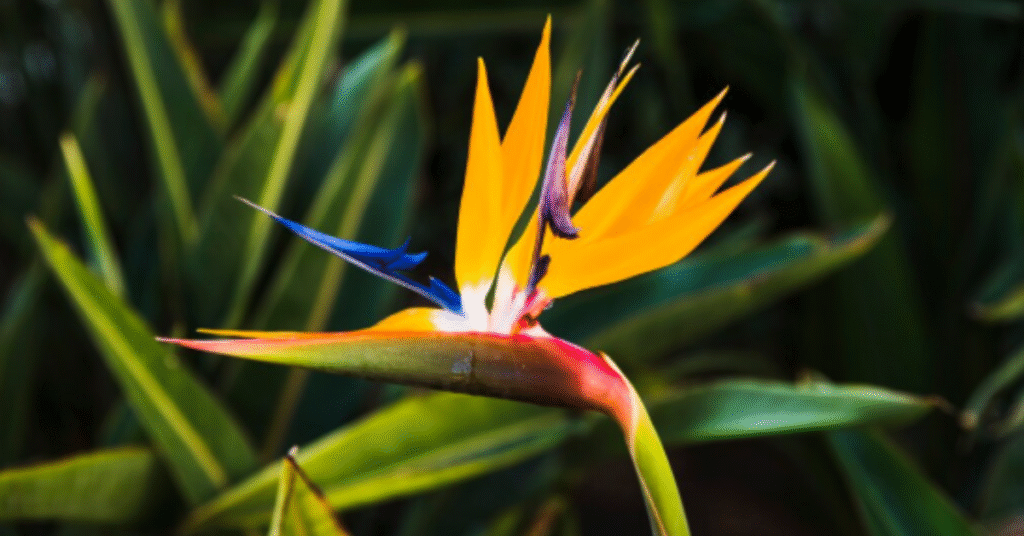Sterlizia, often known as the “Bird of Paradise,” is one of the most captivating tropical plants admired across continents for its exotic structure, vivid colors, and sculptural presence. Searchers looking to understand what Sterlizia truly represents often want more than just its botanical description—they seek insight into its history, cultivation, symbolism, and place in modern design and landscaping. In its native habitats of South Africa, the Sterlizia embodies freedom and resilience, flourishing under sunlight and open skies. Its unique flower shape resembles a tropical bird in flight, making it a favorite among gardeners, florists, and interior designers alike. This article explores Sterlizia’s identity from root to bloom, offering in-depth perspectives on its cultural meanings, horticultural techniques, ecological impact, and modern applications. In a rapidly urbanizing world where green spaces are shrinking, Sterlizia stands as a living piece of art that bridges nature and human creativity. From its evolution to modern cultivation, Sterlizia symbolizes a vibrant intersection of botany, design, and human emotion—a plant that continues to inspire across generations.
The Origin and Botanical Identity of Sterlizia
The botanical name Strelitzia reginae was derived from Queen Charlotte of Mecklenburg-Strelitz, wife of King George III of England, as a tribute to her love for botany. Native to the coastal regions and riverbanks of South Africa, Sterlizia thrives in a subtropical environment where sunlight, humidity, and fertile soil blend perfectly. The plant belongs to the family Strelitziaceae, which includes several species known for their large, leathery leaves and bird-like inflorescences. What sets Sterlizia apart is its striking orange and blue bloom, which emerges from a horizontal, boat-shaped bract called a spathe. This spathe acts as a perch for pollinators like sunbirds, allowing them to access nectar and transfer pollen efficiently. Botanists have long marveled at how this mechanism evolved to mirror avian interactions, representing a perfect symbiosis between flora and fauna.
Morphology and Growth Pattern of the Sterlizia
Sterlizia’s architectural form makes it a centerpiece in both botanical gardens and home landscapes. The plant typically reaches a height of 1 to 1.5 meters, with some species like Strelitzia nicolai growing much taller, even resembling banana trees. The leaves are thick, glossy, and elliptical, arranged in fan-like formations that create a dramatic silhouette. The flower itself, lasting up to two weeks, grows from a sturdy stem with a bluish-green sheath that bursts into a combination of bright orange sepals and deep blue petals. The plant’s rhizomatous root system contributes to its longevity, allowing it to regenerate even after pruning. Growth begins slowly during the first two years but accelerates under optimal light conditions, especially in regions with mild winters and ample sunlight. Indoor growers appreciate its adaptability, though achieving full bloom indoors requires precise humidity control and patient nurturing.
Table 1: Key Botanical Characteristics of Sterlizia
| Characteristic | Description |
|---|---|
| Botanical Name | Strelitzia reginae |
| Common Name | Bird of Paradise |
| Family | Strelitziaceae |
| Native Region | South Africa |
| Flower Colors | Orange, Blue |
| Growth Height | 1–1.5 meters (up to 10m for giant varieties) |
| Blooming Season | Late Winter to Early Spring |
| Lifespan | 10–50 years (depending on care) |
| Ideal Temperature | 15–30°C |
The Symbolism and Cultural Significance of Sterlizia
Beyond its physical beauty, Sterlizia holds deep symbolic value across cultures. In African tradition, it represents liberty and faithfulness, qualities derived from its free-spirited form. In modern floral arrangements, the Bird of Paradise often signifies magnificence, success, and joyous anticipation—making it a popular gift for milestones or achievements. Artists and designers interpret its structure as a metaphor for transformation and ambition. The flower’s upward-reaching stance evokes the pursuit of light, while its contrasting colors symbolize balance between vibrancy and calm. In many regions, Sterlizia is considered a token of optimism, embodying the belief that beauty can thrive even in challenging conditions. As the 20th-century landscape architect Lawrence Halprin once remarked, “Plants are not merely decorative—they are living philosophies of endurance and expression.” Few species capture that essence as vividly as Sterlizia.
Cultivation and Care Techniques for Optimal Growth
Growing Sterlizia requires an understanding of its subtropical origins. The plant demands full sunlight and well-drained soil enriched with organic matter. A slightly acidic to neutral pH (6.0–7.5) provides ideal conditions for root health. During its active growth phase, Sterlizia benefits from regular watering—keeping the soil moist but not waterlogged—to prevent root rot. Fertilizing every two to three weeks with a balanced, slow-release formula supports lush foliage and vibrant blooms. While it is a robust species, overwatering and inadequate drainage remain common pitfalls. In colder climates, the plant can be grown indoors or in greenhouses, where humidity and warmth mimic its natural habitat. Gardeners recommend repotting every three years to encourage aeration and fresh nutrient absorption. Once established, Sterlizia becomes remarkably self-sustaining, requiring minimal pruning and demonstrating resilience to most pests.
Table 2: Recommended Care Guidelines for Healthy Sterlizia Growth
| Growth Aspect | Recommended Practice |
|---|---|
| Sunlight | Full sunlight (6–8 hours daily) |
| Watering | Moderate, allow topsoil to dry slightly between watering |
| Soil Type | Well-drained, organic-rich loam |
| Fertilizer | Balanced NPK (10-10-10) during growth season |
| Temperature Range | 15–30°C |
| Humidity | 50–70% |
| Pruning | Remove old or yellowed leaves |
| Repotting Cycle | Every 3 years |
Ecological Role and Environmental Impact
Sterlizia plays a valuable ecological role in its native environment, supporting pollinators such as birds and bees. Its flowers provide rich nectar sources during dry seasons when other blooms are scarce. Additionally, its robust root systems help in soil stabilization, particularly on slopes and riverbanks. In urban landscapes, Sterlizia contributes to improving air quality, acting as a natural filter that absorbs toxins and increases oxygenation. Environmental researchers also view it as a climate-resilient species due to its drought tolerance and adaptability to various soil types. The plant’s presence in eco-restoration projects across tropical and Mediterranean zones underscores its sustainability potential. As more cities invest in green infrastructure, Sterlizia’s combination of visual appeal and environmental value makes it a natural choice for planners seeking both beauty and ecological function.
Varieties of Sterlizia: From Regal to Exotic
Sterlizia is not limited to a single species; it encompasses several distinct varieties, each with unique traits. The most common, Strelitzia reginae, bears orange and blue flowers and remains compact, ideal for home gardens. Strelitzia nicolai, known as the Giant Bird of Paradise, grows up to 10 meters tall with white and blue blooms resembling cranes. Strelitzia juncea, a rare form, has reed-like leaves and a minimalist aesthetic that appeals to modern landscape designers. Strelitzia alba features elegant white flowers with a subtle fragrance, often used in premium floral arrangements. Each species represents a different interpretation of the same core beauty—a blend of structure, color, and endurance. Garden enthusiasts often cross-breed varieties to develop hybrids that offer new hues and resistance to environmental stress. This experimentation continues to expand the Sterlizia’s botanical legacy.
Sterlizia in Modern Landscape Design
Contemporary landscape designers view Sterlizia as a bridge between art and ecology. Its bold form complements minimalist architecture and tropical settings alike. In residential gardens, it serves as a focal point, often paired with succulents, palms, or ornamental grasses. In commercial or urban spaces, Sterlizia’s sculptural quality brings warmth and organic contrast to glass and concrete environments. Interior decorators also integrate smaller varieties in office lobbies or atriums, using the plant to introduce vitality and calm. Its ability to thrive under indirect light makes it a low-maintenance choice for indoor greenery. As urban design evolves toward biophilic principles, Sterlizia’s presence in city landscapes has become symbolic of a movement—one that merges human innovation with natural resilience.
The Role of Sterlizia in Art and Symbolism
Artists and photographers have long been drawn to the geometric symmetry of Sterlizia. The plant’s angular composition mirrors the modernist fascination with form and balance. In fine art, it often represents a dialogue between nature and abstraction—alive, yet structured. Georgia O’Keeffe’s floral studies, though not specifically of Sterlizia, embody a similar attention to the sensual power of natural forms. In contemporary visual culture, the Bird of Paradise appears in fashion prints, digital design, and even architecture as a motif of exoticism and individuality. Its vibrant hues, positioned against neutral backgrounds, symbolize confidence and liberation. The poet Mary Oliver once wrote, “Attention is the beginning of devotion.” In this way, Sterlizia invites observers not just to look, but to engage deeply with the poetry of living things.
Medicinal and Scientific Research Perspectives
Although primarily ornamental, Sterlizia has recently attracted attention for its biochemical properties. Researchers have discovered that extracts from its leaves contain natural antioxidants and anti-inflammatory compounds, potentially useful in skincare and herbal formulations. While these studies are still in early stages, the findings suggest that the plant’s benefits may extend beyond aesthetic appeal. In ecological research, Sterlizia serves as a model for understanding adaptive evolution—especially its coevolution with bird pollinators. Scientists studying the biomechanics of its spathe have applied similar principles to bio-inspired engineering, including hinge mechanisms in robotics. Such interdisciplinary connections show how a single plant species can influence both scientific innovation and creative thought, bridging natural biology with human ingenuity.
Economic and Commercial Relevance
Sterlizia is a cornerstone of the global ornamental plant industry. Its cut flowers are among the most commercially valuable tropical exports, prized for longevity and visual impact. In horticultural markets, mature Sterlizia plants fetch high prices due to their slow growth cycle and aesthetic demand. Floriculture businesses in regions like California, Kenya, and the Mediterranean have developed large-scale cultivation systems that balance commercial profitability with ecological responsibility. Beyond direct sales, Sterlizia also fuels related industries, from garden decor to eco-tourism. Many botanical gardens use it as a signature species, attracting visitors and promoting environmental education. As sustainability becomes central to market strategies, Sterlizia’s resilience and beauty make it a lasting emblem of ethical horticulture.
Common Challenges and Solutions in Sterlizia Cultivation
Despite its resilience, Sterlizia growers often face specific challenges such as root rot, leaf spotting, or delayed flowering. These issues typically arise from overwatering, inadequate drainage, or insufficient sunlight. Regular inspection and controlled irrigation help maintain root health. Another common concern is the absence of blooms in young plants—often due to premature division or lack of maturity. Gardeners advise patience, as Sterlizia generally takes three to five years to produce its first flowers. Pest infestations, though rare, may occur in humid climates, particularly from aphids and spider mites. Natural remedies like neem oil sprays or mild insecticidal soaps effectively counter such outbreaks. With proper maintenance and periodic fertilization, most issues can be prevented, ensuring that Sterlizia maintains its vigor and signature radiance.
Global Popularity and Modern Lifestyle Integration
In recent decades, Sterlizia has evolved from a botanical rarity into a symbol of modern lifestyle aesthetics. Its form is now synonymous with tropical luxury and creative freedom. Hotels, resorts, and high-end restaurants frequently use it as a natural design element, merging interior sophistication with organic warmth. Social media trends have further amplified its popularity—images of Bird of Paradise plants frequently appear in interior design feeds and influencer content. The plant’s ability to photograph beautifully, combined with its relatively low maintenance, makes it a favorite for urban dwellers seeking a touch of nature. As more people reconnect with greenery in living spaces, Sterlizia embodies the ideal of contemporary botanical art: simple, enduring, and vibrantly alive.
The Future of Sterlizia in Sustainable Horticulture
As climate change challenges conventional gardening, Sterlizia offers a glimpse into the future of sustainable horticulture. Its adaptability to drought and fluctuating weather conditions makes it a valuable model for climate-smart planting. Researchers are experimenting with Sterlizia hybrids that can thrive in even harsher conditions, reducing the dependence on artificial irrigation. In eco-architecture, designers are incorporating the plant into vertical gardens and rooftop ecosystems, where its durability and slow growth make it an excellent fit. Public awareness campaigns promoting biodiversity have also spotlighted Sterlizia as a reminder that beauty and sustainability can coexist. As green infrastructure expands worldwide, this tropical icon is poised to remain a defining feature of both ornamental and ecological landscapes.
Conclusion
Sterlizia stands at the crossroads of beauty, science, and sustainability—a living sculpture that continues to captivate and educate. From its royal namesake in 18th-century England to its role in modern eco-urbanism, the Bird of Paradise symbolizes the timeless interplay between human creativity and natural wonder. Its resilience in the face of changing climates, coupled with its elegance, positions it as both an ecological asset and an artistic muse. “Nature always wears the colors of the spirit,” wrote Emerson, and Sterlizia embodies this truth through every radiant petal and leaf. For gardeners, designers, and nature lovers alike, cultivating Sterlizia is not merely an act of horticulture—it is a celebration of endurance, expression, and connection with the living world.
FAQs
Q1: How long does Sterlizia take to bloom after planting?
Typically, Sterlizia takes between three to five years to produce its first bloom, depending on sunlight exposure and soil conditions.
Q2: Can Sterlizia survive cold climates?
While Sterlizia prefers warmth, it can survive mild frost if protected. Indoor cultivation is recommended in cooler regions.
Q3: How often should Sterlizia be watered?
Water once or twice weekly, allowing the top layer of soil to dry between watering sessions to prevent root rot.
Q4: Is Sterlizia safe for pets?
Parts of the plant can be mildly toxic if ingested, so it is best kept out of reach of cats and dogs.
Q5: What makes Sterlizia an eco-friendly plant?
Its drought resistance, longevity, and air-purifying properties make Sterlizia both sustainable and beneficial for indoor air quality.







